

Engineering Seltzer Rockets. Perkins eLearning. This hands-on activity is an excellent introduction to Newton’s First Law, otherwise known as the Law of Inertia.
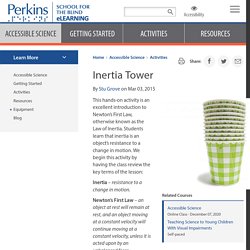
Students learn that inertia is an object’s resistance to a change in motion. We begin this activity by having the class review the key terms of the lesson: Inertia – resistance to a change in motion. Newton’s First Law – an object at rest will remain at rest, and an object moving at a constant velocity will continue moving at a constant velocity, unless it is acted upon by an unbalanced force. Equilibrium – When the net force on an object is zero. Through discussion of these terms, students learn that if an object is at rest it will remain at rest unless an unbalanced force comes along and disturbs its equilibrium. The object of this activity is to observe the properties of Newton’s First Law by attempting to remove the notecards from a tower of wooden blocks without causing enough of a disturbance to the tower’s equilibrium to cause it to tumble.
Sheets - create and edit spreadsheets online, for free. One account.
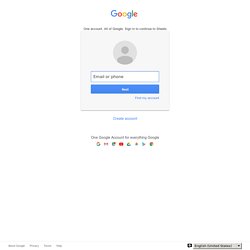
All of Google. Sign in to continue to Sheets Find my account Forgot password? Sign in with a different account Create account. Reinventing the Wheel (for Mars) How do we study the surface of Mars if we can’t go there?
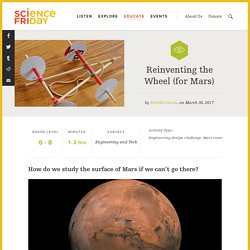
Mars is one of our closest neighbors in the solar system and likely the next planet that humans will set foot on. One big reason we’re interested in Mars is because water once flowed there, and may still flow there today. Almost everywhere water is found on Earth, we find life. Could the same be true of Mars?
We need data to help us determine whether Mars is, or was, suitable for life. Here come the rovers! Joseph Herscher - Kinetic Artist. Rocketry – Google Drive. Free K - 12 Common Core Lesson Plans and Ideas. Middle School Physical Sciences.

Free K - 12 Common Core Lesson Plans and Ideas. Middle School Physical Sciences Scroll Up Scroll Down Motion and Stability: Forces and Interactions back Apply Newton's Third Law to design a solution to a problem involving the motion of two colliding objects.
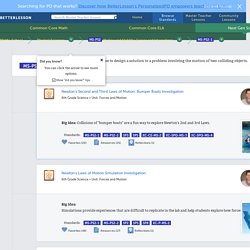
Water Rocketry. Water rockets are an excellent tool to learn about rockets, propulsion, and aerodynamics.
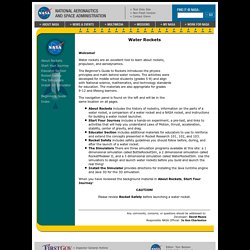
The Beginner's Guide to Rockets introduces the physics principles and math behind water rockets. The activities were developed for middle school students (grades 5-8) and align with National science, mathematics, and technology standards for education. The materials are also appropriate for grades 9-12 and lifelong learners. The navigation panel is found on the left and will be in the same location on all pages. Engineering Balloon Racers. Mass and Momentum. On Target! (Lesson courtesy of PBS’s Design Squad Nation.
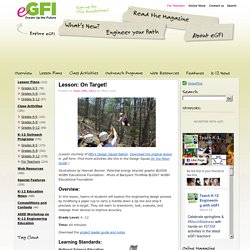
Download the original lesson in .pdf form. Find more activities like this in the Design Squad On the Moon Guide.) Illustrations by Hannah Bonner. Potential energy bicyclist graphic ©2008 WGBH Educational Foundation. Build a Big Wheel. Lesson courtesy of TryEngineering, sponsored by the IEEE.
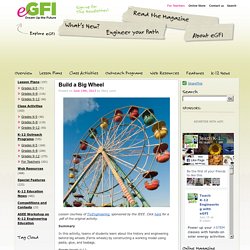
Click here for a .pdf of the original activity. Summary In this activity, teams of students learn about the history and engineering behind big wheels (Ferris wheels) by constructing a working model using pasta, glue, and teabags. Grade level: K-12. Activity: Robot Basketball. Lesson courtesy of TryEngineering.
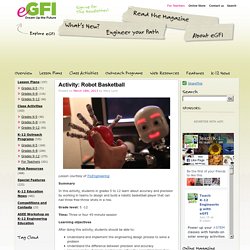
Balloon Aeronautics. (Adapted from lessons developed by TeachEngineering.org, the Wisconsin section of the Society of Women Engineers.
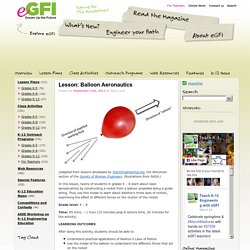
Illustrations from NASA.) In this lesson, teams of students in grades 4 – 8 learn about basic aerodynamics by constructing a rocket from a balloon propelled along a guide-string. They use this model to learn about Newton’s three laws of motion, examining the effect of different forces on the motion of the rocket. Grade level: 4 – 8 Time: 45 mins. – 1 hour (15 minutes prep & lecture time, 30 minutes for the activity) 2nd Biannual NGSS STEM Education Conference. Download the conference schedule and a map Session 1 Arms & Arteries: Adventures in Biomechanical Engineering Looking for ways to integrate engineering into your life science and biology classes? Try biomechanical engineering! Join us as we engineer ways to unclog arteries and construct prosthetic arms while incorporating key scientific principles and NGSS Science & Engineering Practices along the way. Download Session PDFs Session 2 Environmental Engineering: Life in the Bay Water.
Energetic Water. Activity: Robot Basketball. Build a Bobsled Racer. Activity adapted from the Museum of Science, Boston‘s Design Challenges, a program of hands-on activities developed to help students and visitors explore the engineering design process, and from the version modified for classroom use by California’s Tech Museum of Innovation. Click on link to view the educator’s guide (.pdf) Summary Teams of students in grades 3 to 8 learn about friction, forces, and the engineering design process by building and testing miniature bobsleds to see which can race down an icy slope either the fastest or slowest.
Olympic%20Park%20Bobsled%20Track%20Part%20Two-AIMS.pdf. Olympic%20Park%20Bobsled%20Track%20Part%20One-AIMS.pdf. Cluster%20Ballooning-AIMS.pdf. Bungee%20Dolls%20.pdf. Be%20A%20Rotor%20Promoter.pdf. Time%20Trials.pdf. Graphing Average Speed with Superworms. My favorite lab in our force and motion unit is called graphing average speed with superworms. I’ve done this lab for the last several years in my class, and it’s always a hit with the students. The kids like it because they are working with a live organism, and it really helps solidify the concept of graphing motion. Average Speed Station Lab – Mad Science Station Lab Series.
Here is another exciting activity to complement my Mad Science Station Lab Series! If you are not familiar with this yet, you can download it here for free. This free start-up pack will as well provide you all the necessary signage and best practices to run the station lab properly. Bowling Ball Grand Prix. Purpose: The activity will help give students a kinesthetic feel for the inertia concept. This lab is a great way to provide students with an experience that can be very thoroughly discussed and analyzed. Materials: one bowling ball (the heavier the better), many two-liter bottles half filled with water and capped tightly for route markers one broom stopwatches masking tape to mark no touch zone, start/stop, and possibly the route itself Procedure: Create a course like the one pictured above using the bottles as route markers. Students are to navigate a bowling ball through obstacle course as quickly as possible, steering the ball with only a broom.
Bouncing Ball Lab Introduces Models and Foreshadows Future Physics Concepts. MG_Whirligig Lollapalooza_web.pdf. PHYS Crumple%20Zone web Open%20Lesson. Ss0502 12. Paper Rocket Lesson Plan Using Engineering Design Process. Newtons Laws Foam Rockets.